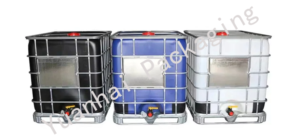Food-grade IBC containers are commonly used in food, chemical, and other industries. However, special attention must be paid to the following issues in the use process.
First of all, you must make sure that its material meets the requirements. Food-grade IBC containers must be manufactured with FDA-compliant materials to ensure they are not harmful to human health. In addition, attention needs to be paid to its compliance with national and industry standards to ensure that it is safe and reliable.
Secondly, attention needs to be paid to its cleanliness and hygiene. Before use, the IBC container must be thoroughly cleaned and sterilized to prevent residues and bacteria from contaminating storage materials such as food or medicine. At the same time, it is also necessary to avoid the surface of the IBC container being damaged or corrupted, which will affect its hygienic performance.
Thirdly, it is necessary to choose the storage and handling method of the IBC container reasonably. The drums should be placed on a solid shelf or support to avoid rupture or tilt due to external impact. When handling, you should use a professional forklift or handcart and other equipment; it is strictly prohibited to use manual lifting or rolling to avoid damage to the IBC container and endanger personal safety!
In addition, attention should be paid to its filling and emptying. When filling, the maximum load limitations marked on the container should be followed and not overloaded or exceeded. When pouring, the proper inclination angle and speed should be used to avoid spilling or gushing.
Finally, it needs to be inspected and maintained regularly. In the process of use, there may be surface wear, loose interfaces, seal failure, and other problems, which must be repaired or replaced in time to ensure the safety performance and service life of the IBC container.




